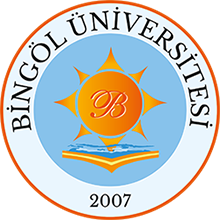Chrysin Protects Rat Kidney from Paracetamol-Induced Oxidative Stress, Inflammation, Apoptosis, and Autophagy: A Multi-Biomarker Approach
Tarih
2017Yazar
Kandemir, Fatih Mehmet and Kucukler, Sefa and Eldutar, Eyup and
Caglayan, Cuneyt and Gulcin, Ilhami
Üst veri
Tüm öğe kaydını gösterÖzet
Paracetamol (PC) is a safe analgesic and antipyretic drug at therapeutic
doses, and it is widely used in clinics. However, at high doses, it can
induce hepatotoxicity and nephrotoxicity. Chrysin (CR) is a natural
flavonoid that has biological activities that include being an
antioxidant, an anti-inflammatory, and an anti-cancer agent. The main
objective of this study was to investigate the efficacy of CR against
PC-induced nephrotoxicity in rats. CR was given orally via feeding
needle to male Sprague Dawley rats as a single daily dose of 25 or 50
mg/kg for six days. PC was administered orally via feeding needle as a
single dose on the sixth day. PC caused significant glutathione
depletion, lipid peroxidation, increased serum toxicity markers (serum
urea and creatinine), and reductions in activities of antioxidant
enzymes (superoxide dismutase-SOD, catalase-CAT, and glutathione
peroxidase-GPx). The renal protective effect of CR was associated with
decreasing the regulation of serum renal toxicity markers and increasing
the regulation of antioxidant enzyme activities. Additionally, PC led to
significant increases in the levels of inflammatory markers including
tumour necrosis factor-alpha (TNF-alpha), interleukin-1 beta (IL-1
alpha) and interleukin-33 (IL-33). Furthermore, PC induced apoptotic
tissue damage by increasing cysteine aspartate-specific protease-3
(caspase-3) activity and autophagic tissue damage by increasing the
expression of light chain 3B (LC3B). CR therapy significantly decreased
these values in rats. This study demonstrated that CR has antioxidant,
anti-apoptotic, anti-inflammatory and anti-autophagic effects on
PC-induced kidney toxicity in rats.
Koleksiyonlar

DSpace@BİNGÖL by Bingöl University Institutional Repository is licensed under a Creative Commons Attribution-NonCommercial-NoDerivs 4.0 Unported License..













